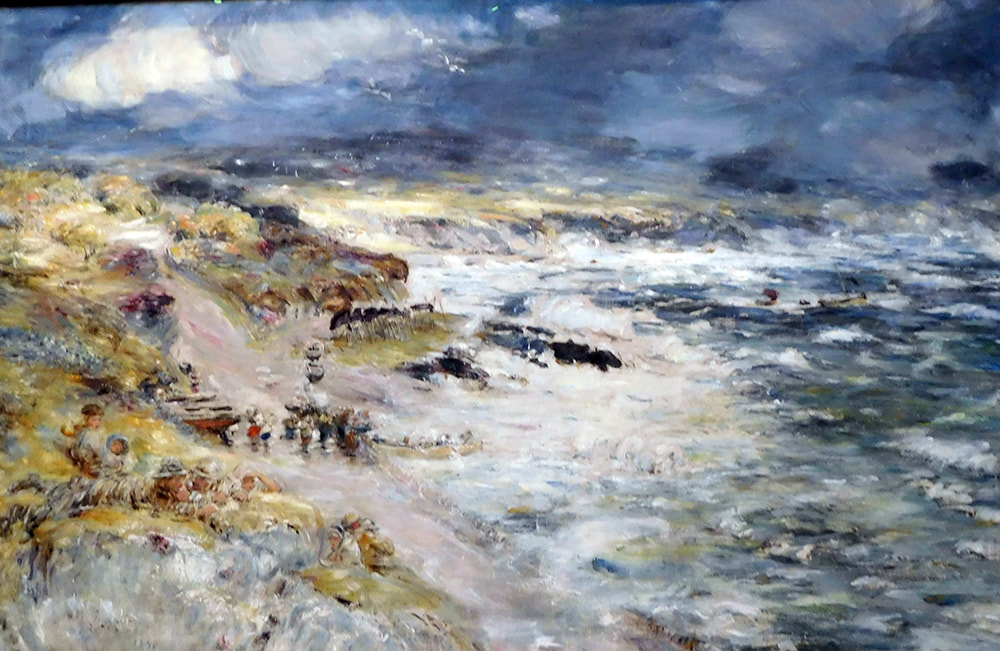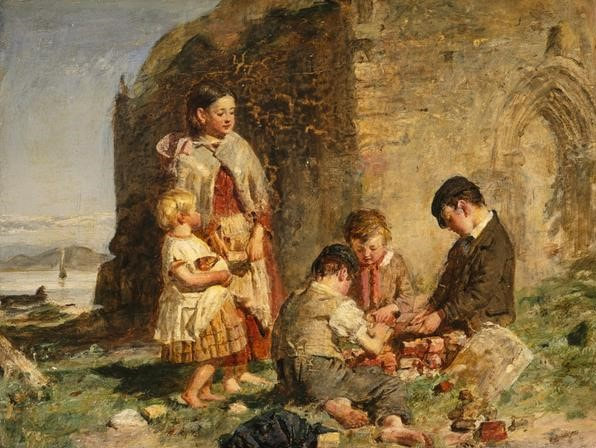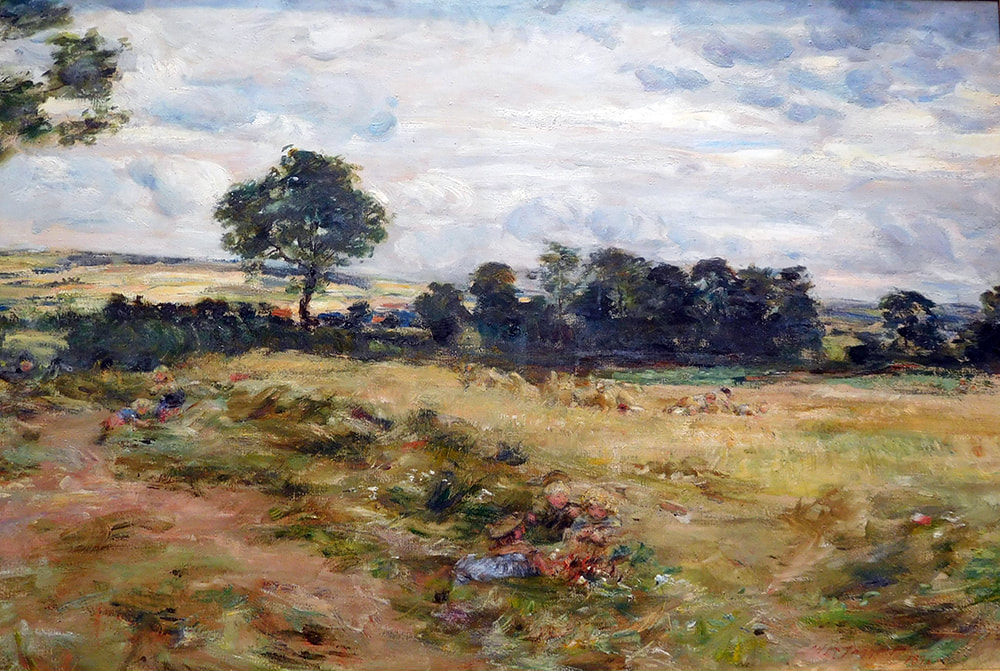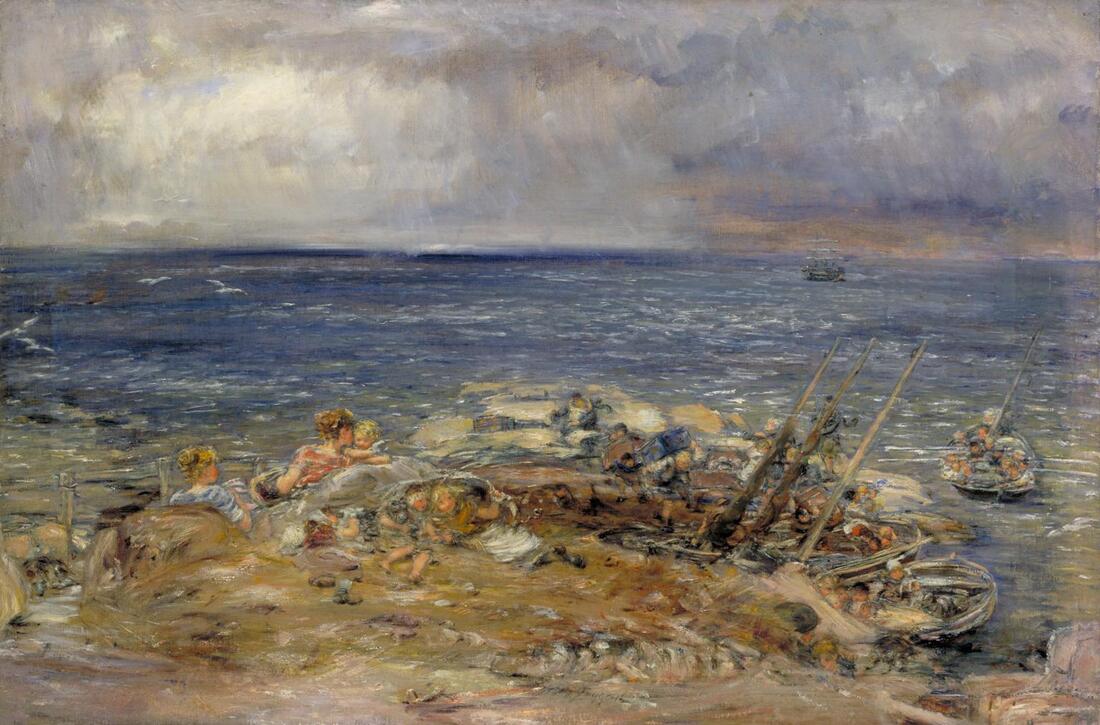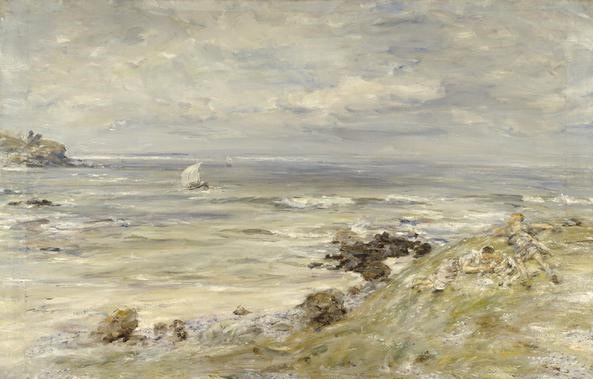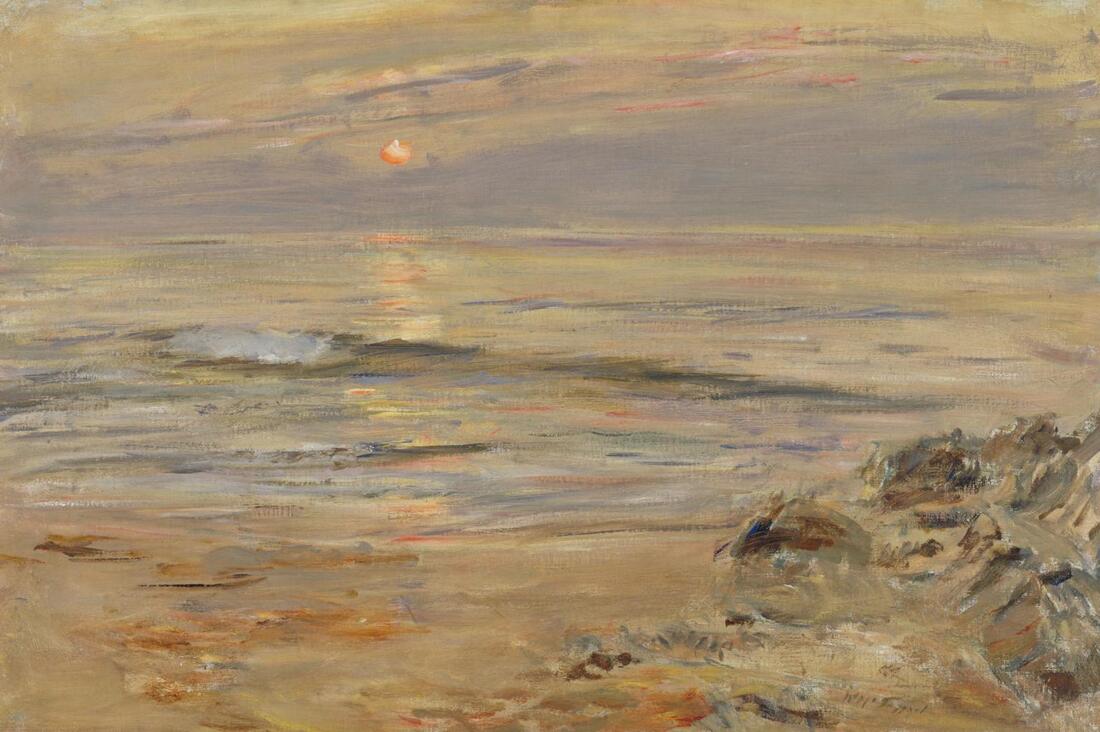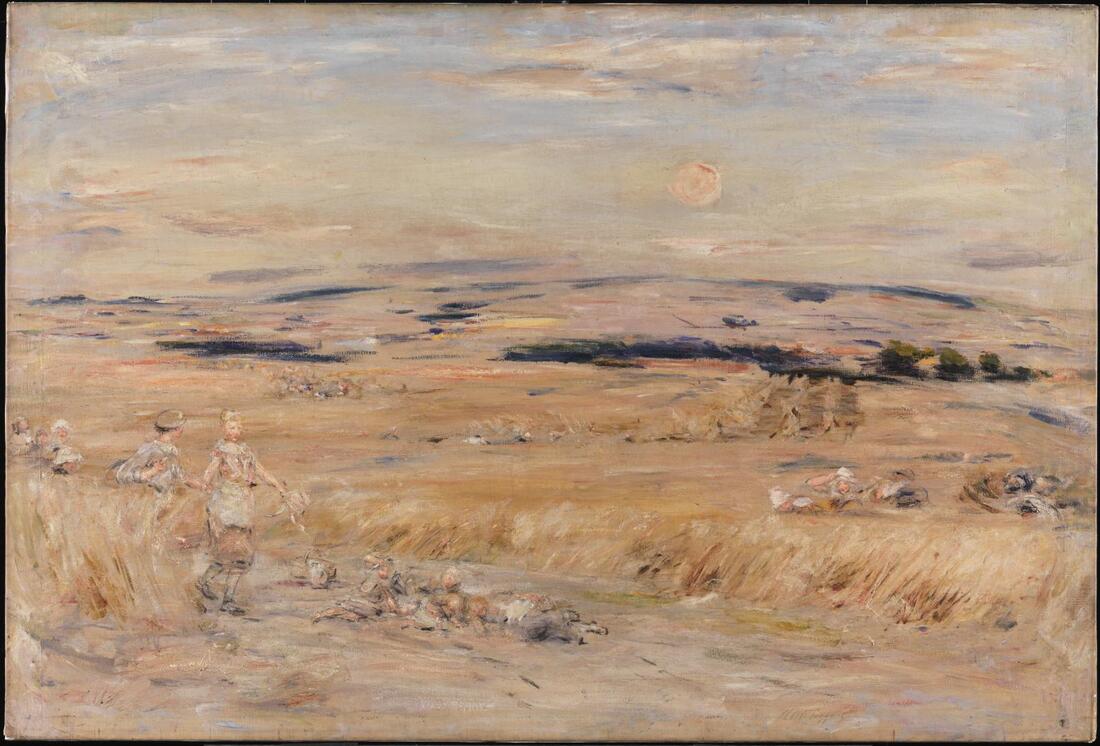An Appreciation: William McTaggart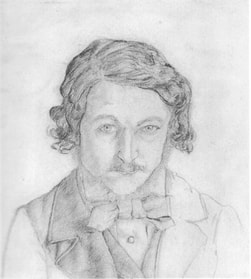 William McTaggart, self-portrait William McTaggart, self-portrait
William McTaggart was a Scottish artists in the second half of the 19th century. A master of both oil painting and watercolors, he is Scotland's best known landscape painter. He is also described as the “Scottish Impressionist.
McTaggart was born in 1835 in Kintyre on the western coast of Scotland. His father was a crofter and William may well have also become a farm laborer except that his family was able to apprentice the boy to a Glasgow apothecary Dr. John Buchanan. While working in the shop, William spent much of his time drawing portraits of the customers. Rather than become upset, Buchanan encouraged William's artistic inclinations and wrote a letter of introduction to the portrait painter Daniel Macnee. Also impressed with William's talent, Macnee suggested that William undertake a formal art education in Edinburgh. Macnee's suggestion did not please William's father. The boy could look forward to a decent career as an apothecary and there was no point in throwing it away for something as frivolous as art. Nonetheless, 16-year old William traveled to Edinburgh where he enrolled in the Trustees Academy (later the Edinburgh Academy of Art). He studied there for seven years studying under Robert Scott Lauder. It was a traditional art education with much drawing done from plaster casts of classical statues. The winner of several prizes at the Trustees Academy, McTaggart was elected an associate of the Royal Scottish Academy at the age of 23. (He would become a full academician in 1870). He supported himself and his education by doing portraits and commission work that took him to England and Ireland as well as around Scotland. In 1857, McTaggart and a friend from the Academy journeyed to England to see the Manchester Art Treasures Exhibition. One of the largest exhibitions of that period, McTaggart would likely have seen the work of the artists of the Pre-Raphaelite Brotherhood such as William Holman Hunt and John Everett Millais there. In any case, around this time, McTaggart developed a style similar to the Pre-Raphaelites. His works were highly detailed and focused on sentimental scenes often involving children. Such scenes were very appealing to the Victorians. Unlike many of his friends from the Academy who moved to London when their education ended, McTaggart decided to remain in Scotland saying that he “would rather be first in my own country then second in any other.” His work was well-received and exhibited in Scotland. In 1863, he married Mary Holmes and together they would go on to have six children. The couple settled in the Edinburgh area but McTaggart would often take drawing and painting trips to the sea, which was a much-loved subject for him. The family also took holidays to the sea coast around Kintyre. McTaggart would do plein air landscapes and seascapes. Around 1880, McTaggart's style changed radically. Instead, of detailed realistic pictures, his works became much freer and looser, bordering on the abstract. He still included children and other people in his works but it was without syrupy Victorian sentimentality. His works were like those being produced contemporaneously in France by the Impressionists. There has been much speculation about what triggered this change. One theory is that McTaggart may have seen an exhibition of Impressionist works staged by Paul Durand-Ruel in London in 1883. However, McTaggart's style had already begun to change prior to the date of that exhibition. Alternatively, it has been suggested that McTaggart was influenced by the work of John Constable. McTaggart had long admired Constable's work. However, until roughly this time, the public was only aware of the polished, finished works that Constable had produced for exhibition. Few knew that Constable had also produced many loosely-done plein air paintings, which he used as references in producing his studio pieces. These works were now surfacing. When these works are compared to McTaggart's new style, the similarity is striking. McTaggart's work differs from Constable's sketches in that McTaggart's were intended as finished pieces. Furthermore, in addition to seeking to capture light and weather effects, McTaggart used his works to explore issues relating to the human condition such as the emigration following the Scottish Clearances and the hard life of fishing communities. Under this theory, the reason McTaggart's new works resemble those of the Impressionists is that Constable was also an influence on the Impressionists. Constable's work first became popular in France and influenced the work of artists such as Eugene Delacroix who in turn influenced the Impressionists. In addition, Claude Monet and Camille Pissarro saw Constable's work when they were living in London during the Franco-Prussian War of 1870. Despite this change in style, McTaggart's work remained popular and he continued on as a successful artist. Indeed, by the late 1880s, he was in a position to refuse commission work. In 1884, McTaggart's first wife died after a failed operation. Subsequently, in 1886, he married Marjory Henderson. who came from a family of painters. Together they had nine children. McTaggart died in 1910 of heart failure. |
Perhaps the best-known of McTaggart's works, "The Storm" (above) depicts a fishing community trying to save a small fishing boat from an approaching storm.
A sentimental Victorian scene "The Past and the Present" (below) was McTaggart's first major success. Works such as "Harvest at Broomieknowe" (above) suggest the influence of John Constable.
Above: in his landscapes, McTaggart often dealt with contemporary issues such as in "The Emigrants" (above), which relates to the massive emigration to North America following the Scottish Clearances, as well as historical subjects such as the arrival of St. Columba in Scotland.
Above: "Summer Sundown; Tir-Nan-Og".
Below: "The Harvest Moon." |
Artist appreciation - William McTaggart
